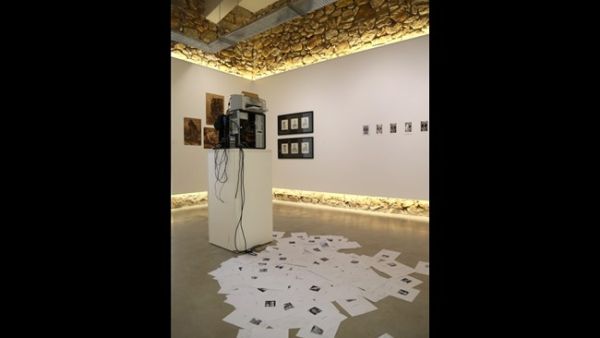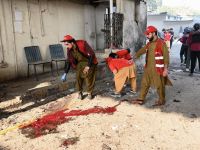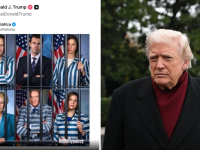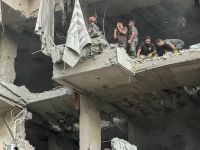“Body and Identity, Perception and Representation,” now up at ARTLAB, comprises a medley of pieces in different media by different artists. Curated by Dimitri Haddad, the show focuses on the wide array of ways that art deals with the human form.Haddad was inspired to create the exhibition when he and his father, a co-owner of the gallery, were cleaning out their storerooms and found a hodgepodge of pieces from previous shows, some of which had not been displayed since the gallery’s opening six years ago.
“This is a way to rotate artists that have been absent for years because we focus a lot on solo exhibitions,” Haddad said, “so some of our gallery artists who haven’t been shown for a while have a chance to be here.”
While ARTLAB had been planning to organize a group show for a while, Haddad said the theme “grew organically.”
As an artist, Haddad focuses on performance, so he was naturally drawn to representations of the human body. “Art has always looked to represent the body, since the very beginning,” he said, from the first cave paintings to the Renaissance and beyond.
A series of portraits by Lebanese printmaker Carine Zahabi uses the same block, edited again and again, to evoke the perpetual self-redefinition of plastic surgery.
Next to it is a photo by Iranian artist Munir Abdallah of a nude man, face averted, sitting in a chair almost out of frame, reflecting the issues of identity faced by the Iranian LGBT community.
The pieces may seem disparate, but Haddad is always poised with a cogent explanation, often quoting multiple sources, of why each work fits firmly in the show.
The centerpiece of the exhibition is something that, as its creator Tarek Mourad has said, “you can’t see.”
The installation “Automatic Art Validating Machine” is composed of an outdated computer (loaded with a program co-written with programmer Omar Abou Nassif) and a printer sitting atop a tall box in the middle of the gallery, surrounded by a heap of paper on the floor.
“If I publish something online ... and I tell people ‘Look at my beautiful art,’ that is art no matter what people say,” he suggested. “If I spray s--- on a canvas and I say it’s art, in the times we live in, it is art.”
When Mourad runs Abou Nassif’s program, it scans every public Instagram account for new posts with a selected hashtag - originally #conceptualart - and prints the results on individual sheets of paper with a specific caption (originally “This is art”). The papers drift to the floor in a random deluge until the program inevitably crashes from the volume of images it’s trying to process - about 6,500 every two minutes.
For Mourad, his formless computer program represented an art form more pure than a painting or a sculpture.
{"preview_thumbnail":"https://cdn.flowplayer.com/6684a05f-6468-4ecd-87d5-a748773282a3/i/v-i-e…","video_id":"e30b3007-ad35-4566-9520-e4df2d170cf2","player_id":"8ca46225-42a2-4245-9c20-7850ae937431","provider":"flowplayer","video":"KSA is Making The World Complicit in a Miscarriage of Justice"}
“This is the only piece in the exhibition that has no visuals. This is pure concept,” he said. “The only important thing about the machine is the idea of the machine.”
For this exhibition, he changed the selected hashtag to “#beauty,” and the caption to “Is this beauty?”
“We chose not to validate art. We chose to question beauty,” Mourad said, “or to question what people hashtag with beauty, or to question what society thinks is beauty.”
The sheer size of the pile of images scattered on the floor - ranging from breathtaking landscapes to grainy selfies - drives home the pertinence of Mourad’s question.
At first glance, this purely digital concept seems as removed from the body as a piece can get.
For Haddad, even a completely formless computer program boils down to the “four main axes” of his exhibition. How do we perceive the identity of that which has no body?
The broad questions Haddad poses have no clear answers, but the eclectic assortment of work in this two-room gallery pushes the viewer to grapple with them anyway.“Body and Identity, Perception and Representation” is on display at ARTLAB, Gemmayzeh, through July 25.
This article has been adapted from its original source.








